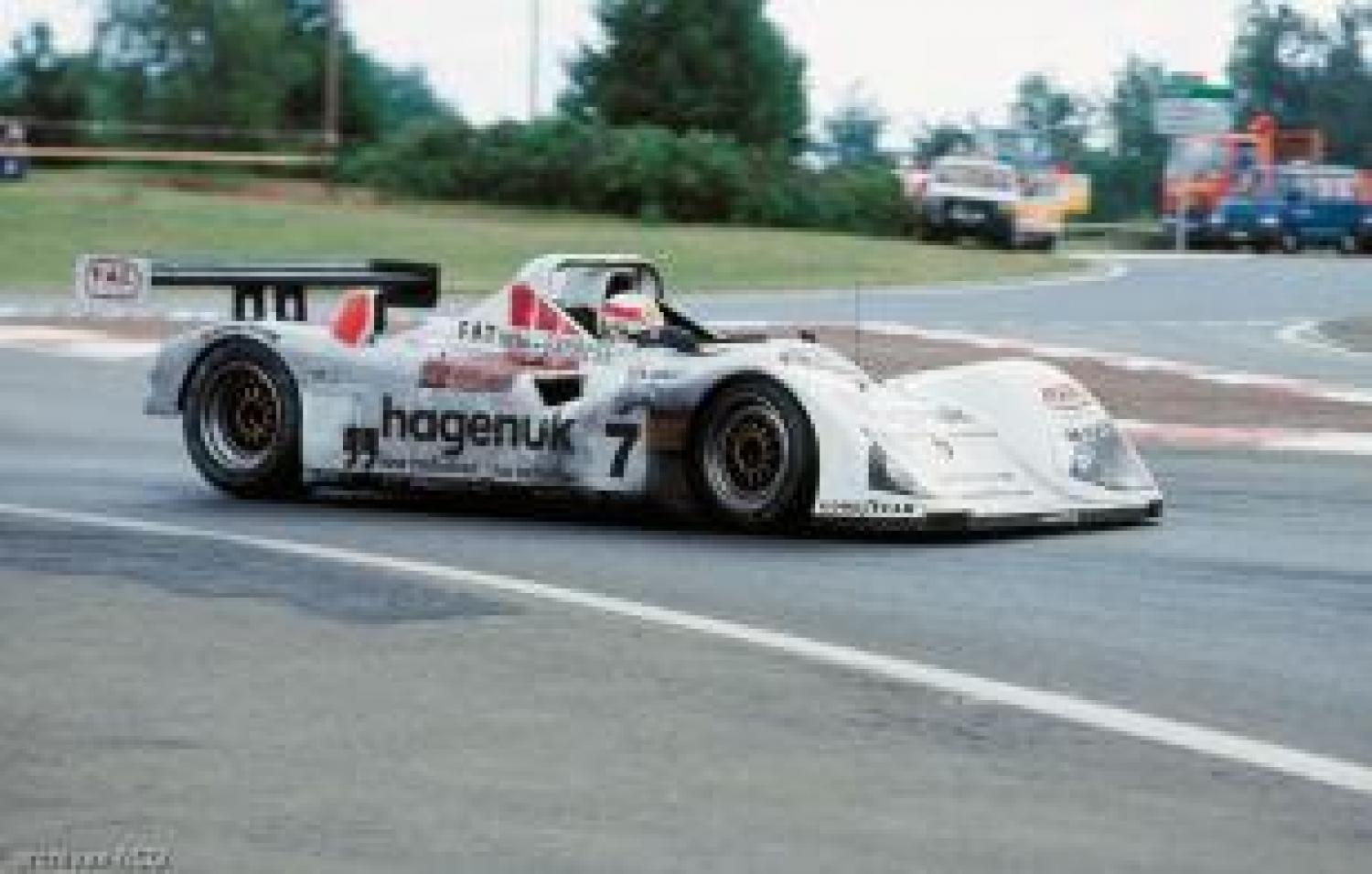
1991 marked the beginning of the Jaguar XJR-14 in the World Sportscar Championship replacing the famous XJR-11 "Silk Cut" Group C. Created by Ross Brawn and John Piper and built by Tom Walkinshaw Racing (TWR), this new version was lighter (only 750 kg), produced more ground effect and was more effective and fast cornering. It has to be said that Ross Brawn, accustomed to the rigors of Formula 1, left nothing left to chance by hiring a staff of about 12 engineers for this new project.
Another important change, the 3.5 litre turbo engine derived from JV6 block is replaced by a 3.5-litre Ford V8 HB as used by Benetton in Formula 1.
Three chassis were produced that year: 591, 691 and 791. After starting the season with a bang in the World Sportscar Championship, Jaguar doubted the reliability of the XJR-14 and decided to race the "old" XJR-12 against the Peugeot 905 at the 24 Hours of Le Mans. The only XJR-14 entered, entrusted to Andy Wallace, Teo Fabi and Kenny Acheson did not start the race. The choice of XJR-12 seemed sensible when Peugeot retired during the race. But despite a solid race, Jaguar finished 2nd, 3rd and 4th, the British were pipped at the post by the legendary Mazda. The XJR-14 continued to score victories late in the season and won the world championship.
In 1992, Jaguar turned the page and decided to run the XJR-14 overseas in the IMSA GTP championship. But the bumpy circuits did not suit the Jaguar that was racing against Toyota and Nissan, with only two victories throughout the season.
But the history of the XJR-14 did not stop there ... In 1992, TWR made an agreement with Mazda to produce additional chassis to run in the World Championship under the name MXR01 with a Judd V10 engine. The prototype does not appear to be very competitive and finished in third place in the championship before the programme was stopped ...
On the other hand, after a few years gathering dust in workshops of TWR in the United States, chassis No.791, used in IMSA Camel GTP began a new career as a Porsche (TWR-Porsche WSC-95) after removing the roof and adding Porsche power..
The Porsche was more competitive than the the preceding Jaguar and Mazda with two straight wins at the 24 Hours of Le Mans in 1996 and 1997 ...
History by chassis number:
591 (built in 1991): Suzuka (DNF), Monza (1st), Silverstone (3rd), Autopolis (2nd). 1992: Miami (6th-DNF), Road Atlanta (1st), Lime Rock (accident in race). Rebuilt to running order at TWR, sold to US collector (2003). Location : Chamberlain-Synergy, England, since 2009.
691/192 : Suzuka (DNF), Monza (2nd), Silverstone (1st), Nurburgring (2nd), Magny Cours (3rd), Mexico (did not race), Autopolis (3rd), Sugo (1st). 1992 (chassis number changed to 192): Mid-Ohio (1st), New Orleans (4th), Watkins Glen (3rd), Laguna Seca (3rd), Portland (DNF), Road America (crash in warm-up). Destroyed.
791 : Nurburgring (1st), Magny Cours (5th), Mexico (6th), Sugo (9th). 1992 : Laguna Seca (4th), Phoenix (2nd), Del Mar (3dr-DNF). Converted to a Porsche WSC95 Spyder in late 1994, raced at LeMans in 1996 and 1997 by Reinhold Joest, winning the race on both occasions. Location : now in Reinhold Joest's private museum.
Marjory Berkache


